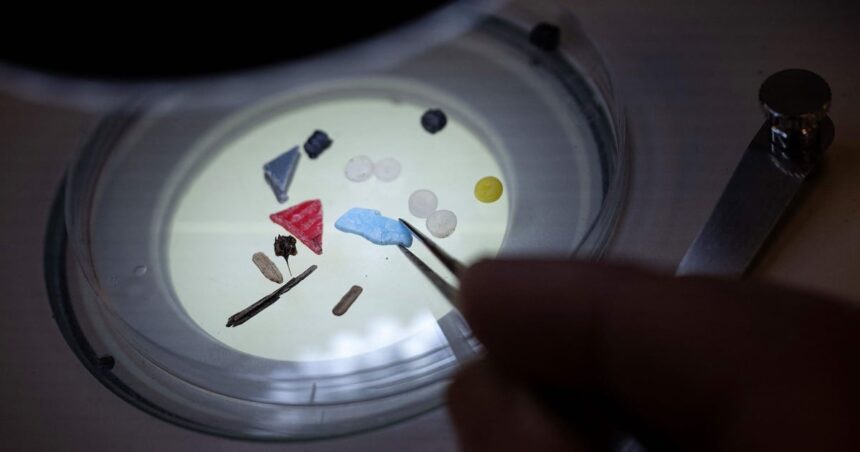In an alarming scientific breakthrough that raises profound questions about environmental contamination of our bodies, researchers have detected microplastics in human semen and follicular fluid for the first time. The discovery, published yesterday in the Journal of Environmental Health, marks a disturbing new chapter in our understanding of how pervasive plastic pollution has become within human biological systems.
“What we once considered impossible has become our new reality,” said Dr. Eleanor Reeves, lead researcher at the University of British Columbia’s Environmental Medicine Department. “These microscopic plastic particles have crossed barriers we assumed would filter them out, potentially affecting one of our most fundamental biological processes—reproduction.”
The international study examined samples from 217 volunteers across North America and Europe, finding that 84% contained detectable levels of microplastics, primarily polypropylene and polyethylene terephthalate (PET)—common components in food packaging, synthetic clothing, and countless everyday products. More concerning was the correlation between higher microplastic concentrations and reduced sperm motility in male participants.
This revelation builds upon previous research documenting microplastics in human blood, placental tissue, and even breast milk. Scientists are particularly troubled by the potential endocrine-disrupting properties of these particles and their associated chemicals, which could interfere with hormone regulation essential for reproductive health.
“We’re just beginning to understand the implications,” explained reproductive endocrinologist Dr. Sophia Chen, who was not involved in the study. “These particles range from 1 to 500 micrometers—some smaller than human cells—and can potentially transport harmful chemicals or disrupt cellular functions in ways we haven’t fully mapped.”
Environmental health experts point to the ubiquity of plastic in modern life as the primary culprit. From the air we breathe to the water we drink and the food we consume, microplastic exposure has become virtually unavoidable. A recent analysis estimated that the average person ingests approximately a credit card’s worth of plastic weekly, primarily through drinking water and seafood consumption.
The political response has been swift but divided. Environmental advocacy groups are calling for immediate regulatory action, while industry representatives argue more research is needed before implementing potentially costly restrictions.
“This isn’t just an environmental issue anymore—it’s a public health crisis demanding immediate attention,” said Canadian Environment Minister Rebecca Thompson at a press conference in Ottawa yesterday. She announced plans for a scientific advisory panel to assess potential regulatory frameworks for reducing plastic pollution.
The economic implications are substantial. Plastic manufacturing represents a $600 billion global industry, with Canada’s sector employing over 100,000 workers. Industry leaders have expressed willingness to collaborate on solutions while warning against hasty regulation.
“We need balanced approaches that protect both human health and economic stability,” said Jonathan Pierce, spokesperson for the Canadian Plastics Industry Association. “The industry is already investing heavily in biodegradable alternatives and improved recycling technologies.”
For Canadian citizens, the findings raise practical questions about everyday exposure. Dr. Reeves recommends practical steps like avoiding plastic food containers, using natural fiber clothing, filtering drinking water, and reducing packaged food consumption—though she acknowledges complete avoidance is nearly impossible.
The study calls for expanded research into potential reproductive health impacts, particularly as global fertility rates continue their decades-long decline in developed nations. Scientists emphasize that while correlation doesn’t prove causation, the presence of these synthetic materials in reproductive fluids merits serious investigation.
As we grapple with the implications of becoming literally infused with the synthetic materials of our own creation, one question looms uncomfortably large: in our race to create convenience through plastic innovation, have we inadvertently compromised the very biological systems that ensure our future as a species?










